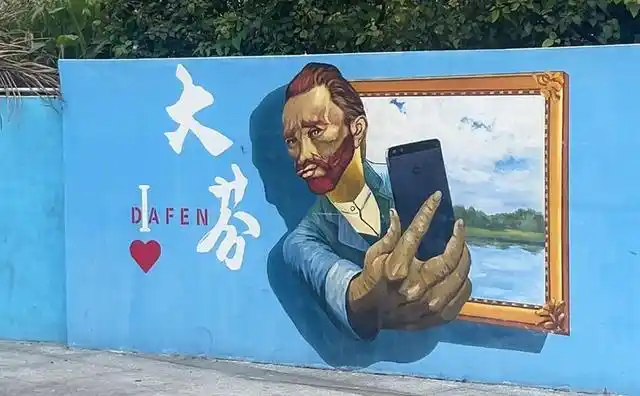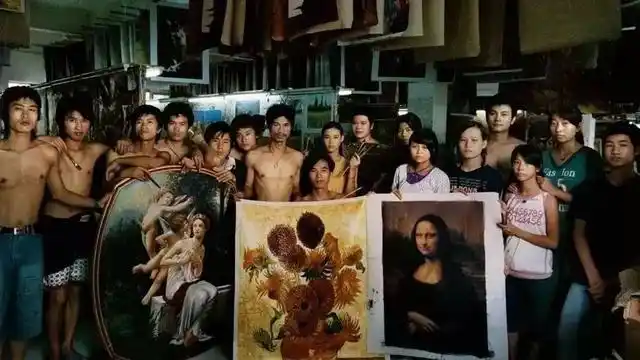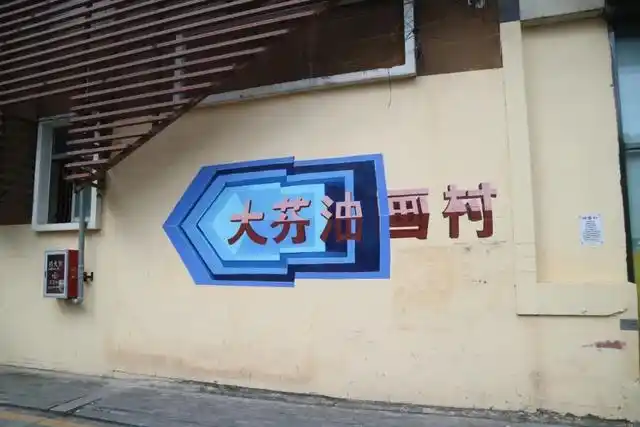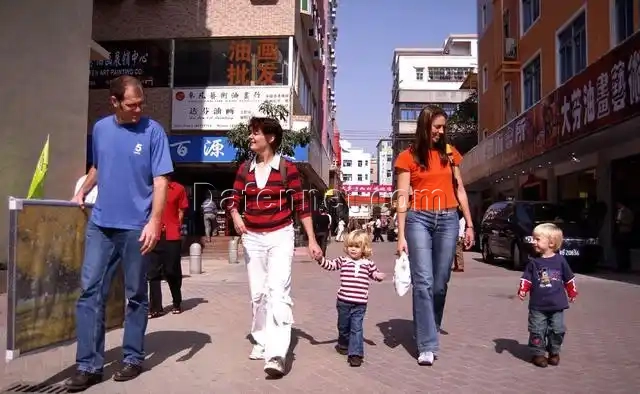Dafen oil painting Village
Dafen Oil Painting Village: From “China’s Van Gogh” to the Future of AI Art

In 2014, the award-winning documentary China’s Van Gogh brought worldwide attention to Dafen Oil Painting Village in Shenzhen.
The film followed Zhao Xiaoyong, a man with only a middle-school education who became known as China’s most devoted Van Gogh painter.
While Vincent van Gogh created over a thousand paintings and sold only one during his lifetime — painting purely for himself — Zhao Xiaoyong spent two decades painting thousands of Van Gogh reproductions for survival, never once creating an original work of his own.
Zhao’s story reflects the paradox of Dafen: a place where art was once mass-produced, yet where countless dreams and identities were quietly forged.

01. “World Oil Paintings, Made in Dafen”
Located in Buji, Shenzhen, Dafen Village covers less than 0.4 square kilometers, but its impact on global art is immense.
At its peak, Dafen produced five million oil paintings per year, supplying 70% of the world’s oil paintings — and 80% of China’s oil paintings.
The story began in 1989, when Wong Kong-chiu, a Hong Kong art dealer, introduced the idea of reproducing famous Western masterpieces in Dafen.
With low rents and a quiet suburban environment, the village soon became a factory-like art community, where painting was not merely expression but industry.
Each painting was divided into parts — background, figures, flowers, shadows — and assembled by multiple workers on a painting assembly line.
There was no single “artist,” because everyone contributed to the whole.
By the mid-1990s, hundreds of painters from across China had settled here, turning Dafen into a thriving ecosystem of replica art production.
Today, the village hosts over 1,200 galleries and 8,000 art professionals, forming the heart of China’s oil painting industry.
02. Brushes That Changed Lives
This industrialized process transformed lives.
Painters like Zhao Xiaoyong spent long nights painting Van Gogh’s Sunflowers, sometimes finishing one in just 28 minutes.
Another painter, Jiang Qingbei, escaped a life as a coal miner to find new meaning in art.
After years of hardship, he founded a training program for disabled and hearing-impaired students, helping over 120 young people learn to paint — 80% of whom now make a living through art.
Among his students, Fu Xiaolan, who lost most of her fingers in a childhood fire, went on to exhibit her works in France.
For many like her, the brush became a tool of rebirth, proving that Dafen is not just a factory, but a gateway to personal transformation.

03. The First Transformation: From Copying to Creating
In Dafen, the difference between a “painter” and an “artist” is just one word — yet it defines identity.
Copyists paint for survival; artists paint for expression.
When Zhao Xiaoyong visited the Netherlands and saw Van Gogh’s original Sunflowers for the first time, he was deeply moved:
“It’s different,” he said — realizing that true art is not about imitation, but about who you paint for.
After returning to China, Zhao created his first original painting — a scene of his hometown and family.
That moment marked his rebirth, from China’s Van Gogh to simply Zhao Xiaoyong, the artist.
Dafen’s broader shift came in 2008, after the global financial crisis slashed export orders.
Painters who once thrived on mass production began exploring originality and self-expression.
Artists like Xiao Shuihui became pioneers of Dafen’s original art movement, blending Chinese cultural elements — pandas, pagodas, and temple motifs — into creative, playful works.
Their paintings, once worth a few hundred yuan, now sell for tens of thousands, and inspire art prints, T-shirts, and cultural merchandise.
The focus has evolved from quantity to creativity, from imitation to cultural identity.
Today, Dafen hosts over 400 professional artists, including 50 members of the China Artists Association, supported by local government initiatives to promote artistic innovation.
04. The Second Transformation: The AI Era Begins
By 2024, Dafen’s oil painting industry reached a total output value of 3 billion RMB, supporting over 20,000 workers.
But Dafen’s ambitions no longer stop at canvas and paint.
In May 2024, the village unveiled its digital ambassador “Long Xiaofen”, an AI Cultural Officer, and launched an AIGC Creative Art Competition.
Artists and AI now co-create works blending Renaissance, cyberpunk, and futuristic styles, showcasing a new form of artistic collaboration.
Feng Jianmei, a longtime curator and Dafen advocate, believes the village’s DNA — “oil painting” — is its greatest creative asset:
“Art, technology, and industry together are Dafen’s future.”
Through programs like the International Artist Residency, Dafen now welcomes global artists to create, collaborate, and exchange ideas — transforming creativity into sustainable livelihood.
Despite challenges such as natural disasters and market fluctuations, Feng remains optimistic:
“Dafen Oil Painting Village is not a finished work — it’s still being painted.”
05. From a Village to a Vision
From factory-style reproductions to original art, and now to AI-powered creativity, Dafen Village embodies resilience and reinvention.
It stands as a living example of how technology, humanity, and art can evolve together.
As Dafen steps into the future — hosting art festivals, cultural events, and immersive oil painting experiences — it continues to redefine what it means to paint, to create, and to dream.

